High-Efficiency Feed Pellet Machine for Quality Animal Feed
Aug . 28, 2025 01:40 Back to list
High-Efficiency Feed Pellet Machine for Quality Animal Feed
Introduction to Advanced Animal Feed Pelletizing Technology & Industry Trends
The global demand for high-quality animal protein is driving significant advancements in feed production technologies. Central to this evolution is the feed pellet machine, an indispensable piece of equipment that transforms raw feed ingredients into dense, nutrient-rich pellets. These pellets offer numerous advantages, including improved feed conversion ratio (FCR), reduced feed waste, enhanced palatability, and simplified handling and storage. The industry is currently witnessing several transformative trends:
- Automation and Smart Integration: Modern animal feed pelletizer machines are increasingly incorporating IoT capabilities, AI-driven process optimization, and fully automated control systems to minimize human intervention and maximize efficiency.
- Sustainability and Energy Efficiency: With rising energy costs and environmental concerns, manufacturers are focusing on designs that reduce power consumption per ton of feed, optimize material utilization, and minimize emissions.
- Precision Feed Formulation: The ability of a pellet making machine for animal feed to process a wider range of raw materials, including novel proteins and by-products, allows for more precise nutritional profiles tailored to specific animal types and growth stages.
- Robustness and Longevity: Demand for equipment with extended service life and minimal maintenance requirements is pushing innovations in material science and engineering design for critical components.
These trends underscore the critical role of sophisticated manufacturing processes and high-quality materials in producing reliable and efficient animal feed pellet making machines that meet the stringent demands of modern agribusiness.
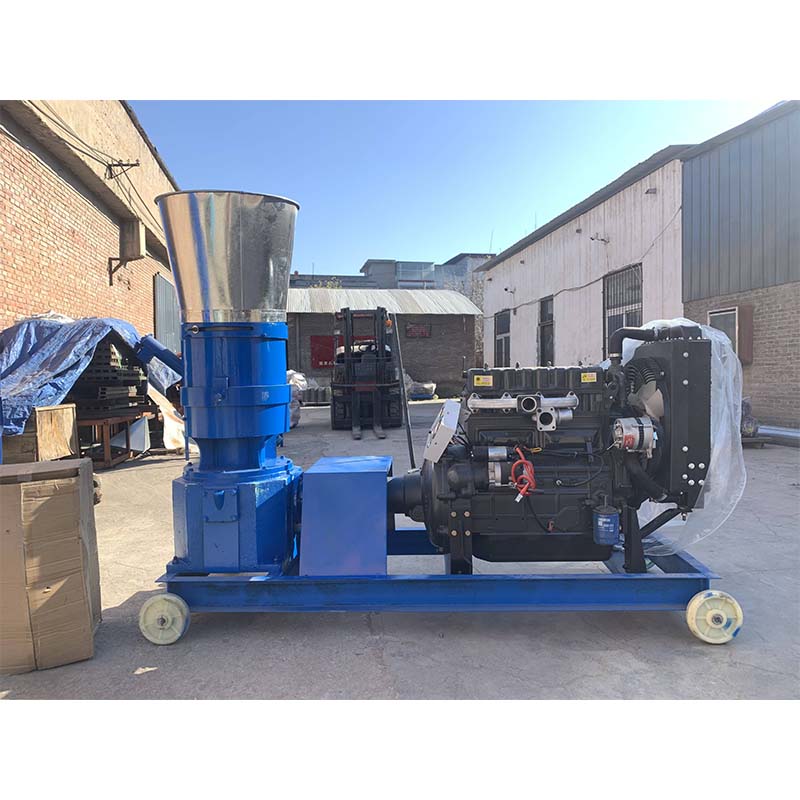
The Meticulous Manufacturing Process of a High-Performance Feed Pellet Machine
The quality and longevity of an feed pellet machine are intrinsically linked to its manufacturing process, from raw material selection to final assembly and testing. Our commitment to excellence ensures that every component is engineered to withstand the rigorous demands of continuous operation.
1. Material Selection: Foundation of Durability
- Die Plates: High-chromium alloy steel or stainless steel, specifically chosen for superior wear resistance and corrosion resistance. These materials endure extreme pressure and abrasion during pellet formation.
- Rollers: Forged alloy steel, often with specialized heat treatment (e.g., carburizing, quenching) to achieve optimal hardness (HRC 58-62) and toughness, preventing premature wear.
- Shafts & Gears: High-strength carbon steel or alloy steel, precisely machined and heat-treated to ensure torsional strength and fatigue resistance in the gearbox.
- Conditioner & Feeder Components: Stainless steel is primarily used for contact parts to ensure hygiene and prevent corrosion from steam and feed ingredients, crucial for food safety and prolonging service life.
2. Core Manufacturing Processes: Precision and Strength
- Precision Casting (for Dies): Advanced vacuum casting or centrifugal casting techniques are employed for ring dies to ensure uniform material density and minimize defects. This provides a consistent matrix for subsequent drilling and grinding.
- Forging (for Rollers and Shafts): Hot forging processes create robust, homogenous microstructures in critical components like roller shells and main shafts. This eliminates internal voids and improves material strength and fatigue life significantly.
- CNC Machining: State-of-the-art 5-axis CNC machining centers are used for all critical components—dies, rollers, gearboxes, and housings. This guarantees micron-level dimensional accuracy, crucial for optimal pelleting performance and minimal vibration. For dies, precise hole drilling and counter-sinking are vital for pellet quality and reduced die wear.
- Heat Treatment: A multi-stage heat treatment regimen, including quenching, tempering, and nitriding, is applied to wear parts and transmission components. This enhances surface hardness, core toughness, and wear resistance, extending the operational lifespan and ensuring mechanical integrity under high stress.
- Surface Finishing: Precision grinding, polishing, and specialized coatings are applied to reduce friction, improve corrosion resistance, and facilitate smoother material flow. For instance, dies undergo internal honing to achieve optimal L/D ratios and consistent pellet density.
3. Rigorous Testing Standards and Quality Assurance
Every pellet machine for animal feed undergoes stringent quality control at each manufacturing stage and a comprehensive final performance test. We adhere to international standards such as ISO 9001 for quality management systems and relevant ANSI standards for mechanical design and safety.
- Material Composition Analysis: Spectroscopic analysis verifies raw material composition against specifications.
- Dimensional Accuracy: CMM (Coordinate Measuring Machine) inspections ensure precise tolerances for machined parts.
- Hardness Testing: Rockwell or Vickers hardness tests confirm heat treatment efficacy for dies and rollers.
- Dynamic Balancing: Critical rotating components are dynamically balanced to minimize vibration and extend bearing life.
- Performance & Endurance Testing: Each completed machine undergoes dry runs and actual pelletizing tests under varying loads to assess output capacity, energy consumption (kWh/ton), pellet durability index (PDI), and noise levels. This often involves continuous operation for several hours to simulate real-world conditions.
4. Service Life and Target Industries
Designed for a service life exceeding 15-20 years with proper maintenance, our machines are built for demanding environments. They are critical assets in large-scale commercial feed mills, aquaculture farms, poultry operations, and livestock breeding facilities globally. Our robust construction and precision engineering provide distinct advantages in typical application scenarios:
- Energy Saving: Optimized die compression ratios and precision-machined rollers significantly reduce friction and power consumption, achieving up to 15% energy savings compared to conventional designs. For instance, a typical 5-ton/hour pellet mill might consume 100 kWh/ton; our optimized design can reduce this to 85 kWh/ton, leading to substantial operational cost reductions.
- Corrosion Resistance: Extensive use of stainless steel for feed contact surfaces ensures resistance to corrosive feed ingredients and steam, minimizing contamination risks and extending component life, particularly vital in environments processing high-moisture or acidic feeds.
- Reduced Maintenance: High-grade components and advanced lubrication systems drastically cut down on maintenance intervals and spare part replacements, reducing total cost of ownership (TCO).
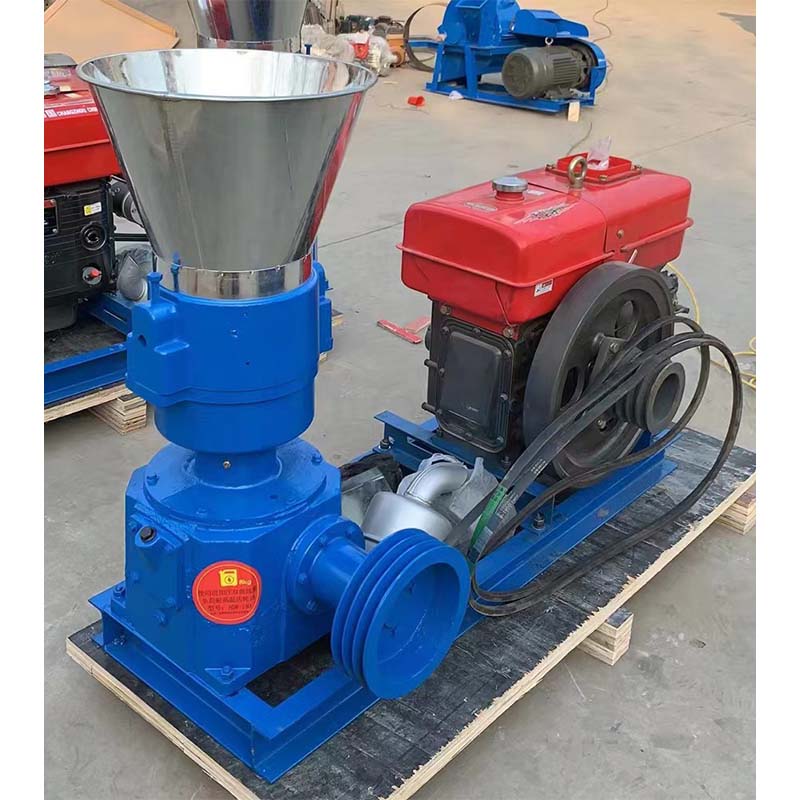
Technical Specifications & Performance Parameters
Understanding the technical specifications of an animal feed pelletizer machine is crucial for selecting the right equipment for specific operational requirements. Our machines are designed with advanced engineering principles to deliver optimal performance, efficiency, and pellet quality.
Key Components and Terminology:
- Ring Die: The core component where feed material is pressed through holes to form pellets. Its L/D (Length-to-Diameter) ratio significantly influences pellet density, durability, and energy consumption.
- Rollers: Apply pressure to force mash through the die holes. Their design (e.g., fluted, dimpled) affects feeding efficiency and wear rate.
- Conditioner: Uses steam and/or liquid additives to pre-treat feed mash, gelatinizing starches, sterilizing material, and improving pellet quality and die throughput.
- Gearbox: Transmits power from the motor to the die and rollers, critical for torque and speed management. Our gearboxes are heavy-duty, multi-stage designs for high efficiency and longevity.
- Pellet Durability Index (PDI): A measure of pellet strength and resistance to breakage during handling and transport. Higher PDI ensures less fines and better feed utilization.
Representative Product Specification Table:
The following table provides typical specifications for our range of high-performance animal feed pellet making machines, illustrating the robust capabilities and technical excellence embedded in our designs.
| Parameter | Unit | Model YZ-PM-500 | Model YZ-PM-800 | Model YZ-PM-1200 |
|---|---|---|---|---|
| Capacity (Poultry Feed) | Tons/Hour | 3-5 | 8-12 | 18-25 |
| Main Motor Power | kW | 55-75 | 110-160 | 220-300 |
| Die Diameter | mm | 500 | 800 | 1200 |
| Pellet Diameter Range | mm | 2.0-12.0 | 2.0-12.0 | 2.0-12.0 |
| Pellet Durability Index (PDI) | % | >95 | >96 | >97 |
| Power Consumption | kWh/Ton | 80-95 | 75-90 | 70-85 |
| Steam Consumption | kg/Ton | 30-50 | 25-45 | 20-40 |
| Overall Dimensions (LxWxH) | m | 2.5x1.2x2.0 | 3.0x1.5x2.5 | 3.5x1.8x3.0 |
These specifications highlight our capability to deliver machines that offer high throughput, energy efficiency, and superior pellet quality across a range of operational scales.
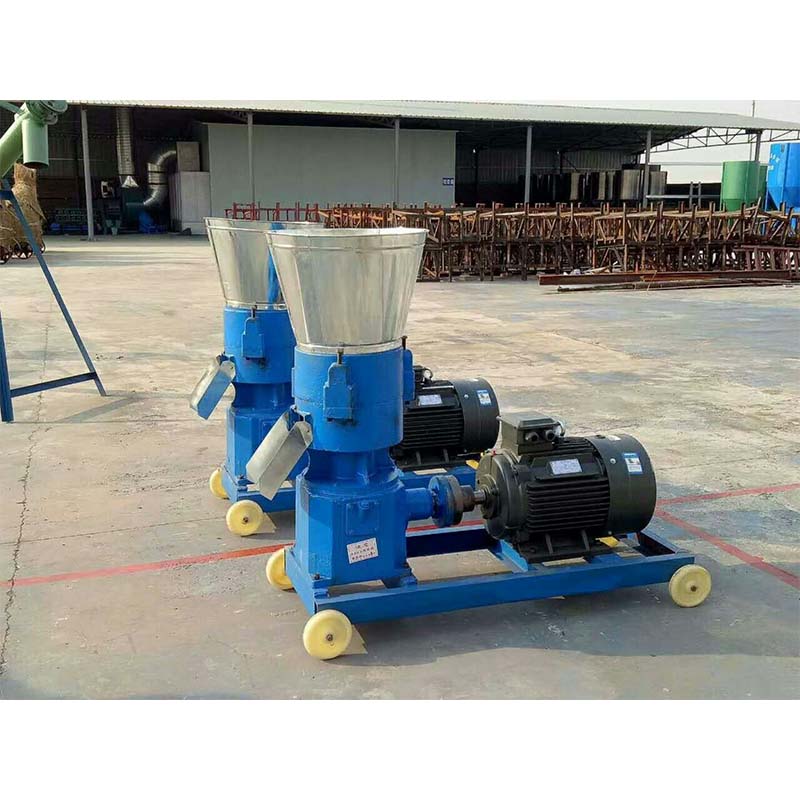
Versatile Application Scenarios for Animal Feed Pellet Making Machines
The versatility of an pellet making machine for animal feed makes it indispensable across diverse sectors of animal husbandry. Our machines are engineered to handle a wide array of raw materials and produce specialized pellets for various animal species, optimizing nutritional delivery and operational efficiency.
1. Poultry Feed Production:
For broiler and layer operations, pelletized feed significantly reduces selective feeding, improves feed uniformity, and enhances nutrient absorption. Pellets ranging from 2.0-4.0 mm are typically produced, offering high digestibility and reduced dust, which benefits bird respiratory health. The thermal treatment during pelleting also inactivates anti-nutritional factors and reduces pathogenic bacteria, contributing to healthier flocks and better growth rates.
2. Livestock Feed (Cattle, Swine, Sheep) Production:
Larger pellets (6.0-12.0 mm) are common for cattle, swine, and sheep. These pellets optimize rumen function, prevent sorting, and ensure consistent intake of balanced diets, leading to improved weight gain, milk production, and reproductive performance. The density of pellets also allows for more efficient bulk handling and reduced storage footprint.
3. Aquaculture Feed (Fish, Shrimp) Production:
Producing high-quality aquatic feed requires specialized pellet mills capable of creating stable, water-resistant pellets that either float or sink at a controlled rate. Our machines, equipped with appropriate dies and conditioners, can produce pellets with excellent water stability (up to 2 hours) and specific buoyancy characteristics (e.g., sinking pellets for shrimp, floating pellets for certain fish species). This minimizes nutrient leaching into the water, improves feed utilization, and reduces environmental impact.
4. Pet Food and Specialty Feed Production:
Beyond traditional livestock, our equipment can be configured for pet food, laboratory animal feed, and other specialty applications requiring precise pellet size, hardness, and nutritional integrity. The ability to incorporate a wide range of ingredients, including high-fat or high-fiber components, makes our machines adaptable to evolving market demands.
Customer Feedback & Experience:
A leading poultry integrator in Southeast Asia reported a 7% improvement in their feed conversion ratio (FCR) and a 10% reduction in feed waste after upgrading to our high-efficiency pellet mill. Similarly, an aquaculture farm noted a 15% increase in feed retention in ponds and a significant reduction in water pollution due to the superior water stability of pellets produced by our equipment. These real-world results underscore the tangible benefits derived from investing in our advanced pelletizing solutions.
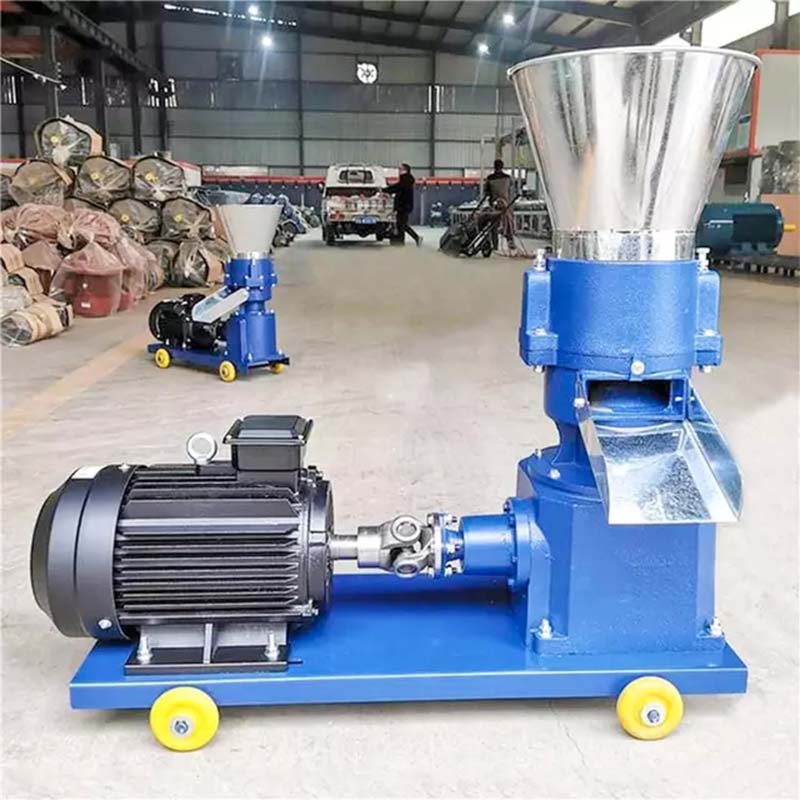
Technical Advantages of Our Animal Feed Pellet Machines
Our animal feed pellet making machines stand apart due to a confluence of innovative design, superior material science, and advanced manufacturing techniques, all contributing to unparalleled performance and operational longevity.
- Optimized Die & Roller Design: Our dies feature meticulously engineered L/D ratios and precisely drilled holes (achieved via gun drilling and vacuum tempering) that reduce frictional resistance while ensuring optimal compression. Coupled with high-wear-resistant alloy steel rollers, this design minimizes power consumption per ton of feed, translating to significant energy savings. This precision engineering enhances pellet quality, ensuring uniform density and maximum durability (PDI >95%).
- Robust Gearbox and Drive System: At the heart of our pellet mills is a heavy-duty, multi-stage helical gear drive system. Manufactured with high-precision grinding machines, these gears offer superior efficiency (>98% power transmission), reduced noise levels (typically below 80 dB), and an extended service life. The direct-drive configuration (or high-efficiency belt drive for smaller models) eliminates power loss, providing stable and consistent torque to the pelleting chamber.
- Advanced Conditioning Module: Our machines integrate a sophisticated conditioner that utilizes direct steam injection and/or liquid additive application. This pre-treatment ensures optimal feed mash gelatinization, enhances hygiene by killing harmful bacteria (e.g., Salmonella reduction by 99.9% at 85°C for 30s), and improves pellet binding. The residence time and temperature control are precisely managed by integrated sensors and PLC systems, crucial for specific feed types like aquaculture feeds requiring high water stability.
- Intelligent Automation & Control: Equipped with Siemens PLC and HMI interfaces, our pellet mills offer intuitive control over all operational parameters—feed rate, steam flow, die temperature, and motor load. Real-time diagnostics, fault alarms, and remote monitoring capabilities enhance operational safety, simplify troubleshooting, and enable predictive maintenance strategies, maximizing uptime.
- Modular Design for Ease of Maintenance: Components such as dies, rollers, and knives are designed for quick and easy replacement, minimizing downtime during routine maintenance. The modular construction of the gearbox and main shaft assembly facilitates efficient servicing, reducing labor costs and improving overall operational efficiency.
- Enhanced Safety Features: Compliance with international safety standards is paramount. Our machines include overload protection, emergency stop buttons, interlock systems for access panels, and advanced motor protection relays, safeguarding both operators and equipment.
These technical advantages collectively contribute to a lower total cost of ownership (TCO) and superior pellet output, making our machines a strategic investment for feed producers aiming for efficiency, reliability, and high-quality product.
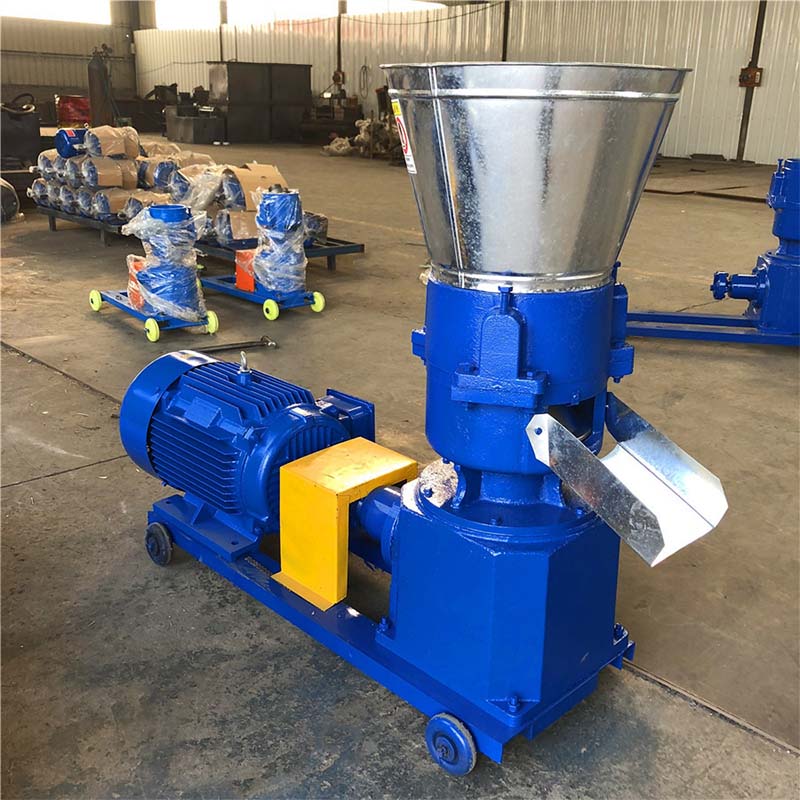
Vendor Comparison and Authoritativeness
Choosing the right vendor for an animal feed pelletizer machine is a critical decision that impacts long-term operational success. Our commitment to quality, innovation, and customer satisfaction establishes us as a leader in the industry.
Why Choose Us? A Comparison:
| Feature/Aspect | Our Solution (Yize Machine) | Competitor A (Standard Offerings) | Competitor B (Budget Options) |
|---|---|---|---|
| Engineering & Design | Precision-engineered with advanced CAD/CAM, optimized for energy efficiency and pellet quality. | Standard designs, functional but less optimized for latest efficiency gains. | Basic design, often sacrificing efficiency for lower upfront cost. |
| Core Component Materials | High-chromium alloy steel dies, forged alloy steel rollers, SS contact parts. | Standard alloy steel, some SS in critical areas. | Lower grade steel, minimal SS, impacting wear life. |
| Automation & Control | Siemens PLC, HMI, real-time diagnostics, remote monitoring. | Basic PLC, manual adjustments, limited diagnostics. | Mostly manual control, basic safety features. |
| Energy Efficiency (kWh/ton) | Industry-leading: 70-95 kWh/ton (model dependent). | Moderate: 90-110 kWh/ton. | Higher: >110 kWh/ton. |
| Pellet Durability Index (PDI) | Consistently >95%, reaching 97% for premium models. | Typically 90-94%. | Often |
| After-Sales Support & Warranty | Comprehensive 24/7 support, extensive spare parts, 2-year warranty. | Standard business hours support, basic spare parts, 1-year warranty. | Limited support, slow spare parts, minimal warranty. |
| Certifications | ISO 9001, CE, TUV Rheinland certified. | CE only, or self-certified. | Few or no internationally recognized certifications. |
Authoritativeness and Certifications:
Our reputation is built on decades of expertise in heavy machinery manufacturing, specializing in solutions for feed processing. We are proud to hold:
- ISO 9001:2015 Certification: Demonstrating our adherence to a robust quality management system across design, manufacturing, and after-sales service.
- CE Certification: Ensuring compliance with European health, safety, and environmental protection standards.
- Years of Service: With over 20 years in the industry, we have developed deep institutional knowledge and a track record of successful installations globally.
- Partner Clients: Our client portfolio includes numerous leading international feed producers and agribusiness conglomerates, testament to our reliability and performance. While client names are confidential, our extensive project list speaks volumes.
- Proprietary Test Data: Extensive in-house R&D and testing validate our designs, often exceeding industry benchmarks for efficiency and durability. For instance, our latest die technology consistently achieves 10-15% longer service life compared to standard dies under equivalent operating conditions.
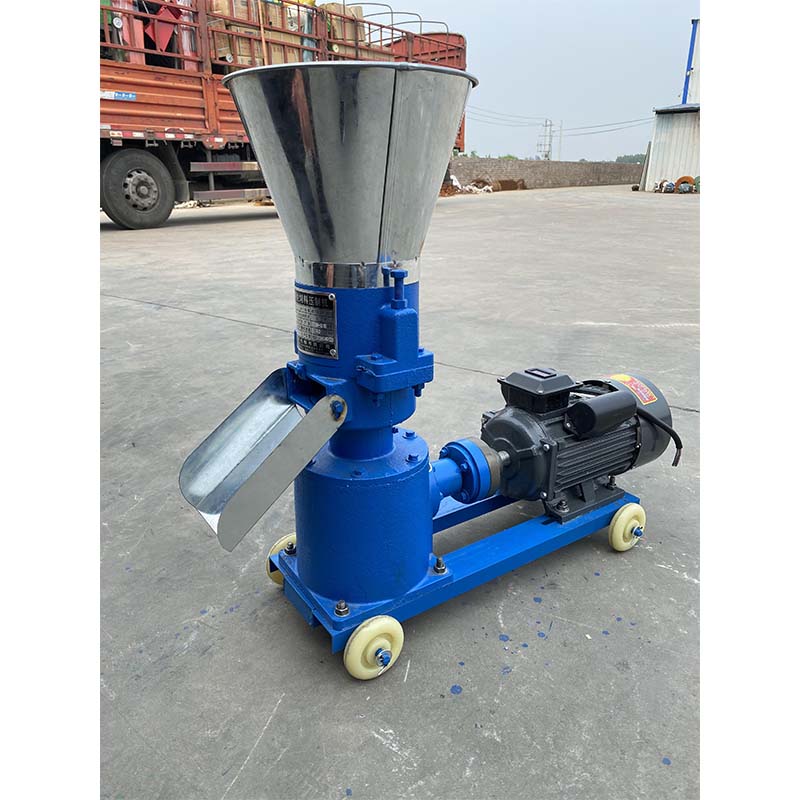
Customized Solutions & Application Case Studies
Recognizing that every feed production facility has unique requirements, we offer extensive customization options for our animal feed pellet making machines. Our engineering team collaborates closely with clients to develop tailored solutions that integrate seamlessly into existing operations and meet specific production goals.
Customization Capabilities:
- Capacity & Configuration: From small-scale commercial operations requiring 1-ton/hour units to large industrial mills needing multi-line systems exceeding 50 tons/hour, we design and integrate machines to match throughput demands.
- Die Specifications: Customizable die diameters, hole patterns, and L/D ratios to produce pellets of precise size, density, and hardness for various animal types (e.g., micro-pellets for fish fry, textured pellets for ruminants).
- Automation Levels: Integration with existing plant control systems, advanced SCADA solutions, or standalone intelligent control panels for varying degrees of automation, including ingredient dosing, steam regulation, and automated lubrication.
- Material Compatibility: Special consideration for processing abrasive, corrosive, or sticky raw materials, involving specialized alloy components or surface treatments to extend part life.
- Auxiliary Equipment Integration: Seamless integration with pre-conditioners, coolers, crumblers, and sieving systems to form a complete, optimized pelleting line.
Application Case Study 1: Large-Scale Poultry Feed Mill Expansion
Client: A prominent poultry feed producer in South America, expanding their annual production capacity from 300,000 to 500,000 tons.
- Challenge: The client required a new pelleting line that could handle high volumes (20 tons/hour), maintain consistent pellet quality (PDI >96%) for broiler starter and finisher feeds, and integrate with their existing central control system while minimizing energy consumption.
- Solution: We provided a customized YZ-PM-1200 series feed pellet machine, configured with a dual-shaft differential conditioner for optimal steam penetration and a specialized die with an L/D ratio tailored for poultry feed. The machine was integrated with a state-of-the-art PLC system that interfaced directly with the client's plant-wide SCADA for centralized control and real-time data monitoring.
- Results: The new line consistently achieved a throughput of 22 tons/hour with an average PDI of 96.8%. Energy consumption was recorded at an impressive 78 kWh/ton, representing a 12% reduction compared to their previous equipment. The integration allowed for streamlined operations, reducing labor costs by 15% and ensuring high-quality feed output, significantly contributing to the client's expansion goals.
Application Case Study 2: Aquatic Feed Production for High-Value Shrimp Species
Client: A specialized aquaculture farm in Southeast Asia focusing on high-value shrimp and prawn feed production, requiring extremely water-stable pellets.
- Challenge: Producing small (1.0-2.5 mm), dense, sinking pellets with high water stability (minimum 4 hours without disintegration) and low nutrient leaching, vital for maintaining water quality in shrimp ponds and maximizing feed utilization.
- Solution: We engineered a specialized YZ-PM-500 model with a custom-designed ring die and an enhanced conditioner for extended steam treatment and precise moisture control. The machine incorporated wear-resistant stainless steel components throughout the feed path to prevent contamination and corrosion from high-salinity ingredients.
- Results: The customized pellet mill successfully produced shrimp feed pellets with a consistent diameter of 1.5 mm, achieving an exceptional water stability of over 5 hours. This led to a significant reduction in feed waste (estimated 20% improvement) and better water quality, which in turn contributed to a healthier pond environment and a 10% increase in shrimp growth rates. The client reported enhanced product consistency and market reputation for their premium shrimp feed.
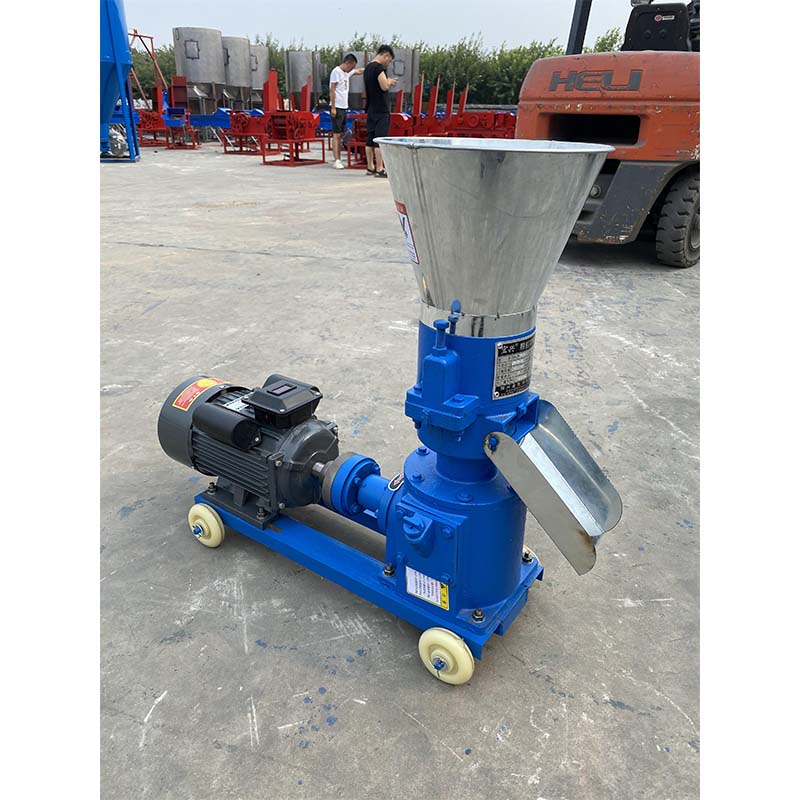
Trustworthiness: FAQ, Lead Time, Warranty & Support
Our commitment to our clients extends beyond delivering high-quality animal feed pelletizer machines. We prioritize transparency, reliable service, and comprehensive support to ensure your long-term operational success.
Frequently Asked Questions (FAQ):
Q1: What is the typical lifespan of your pellet mill dies and rollers?
A1: The lifespan varies based on raw material abrasiveness, operating conditions, and maintenance. However, with our high-chromium alloy steel dies and forged alloy steel rollers, clients typically experience 1,500 to 2,500 hours of operation for dies and 800 to 1,200 hours for rollers before replacement, significantly higher than industry averages.
Q2: How does your machine achieve superior pellet durability and water stability for aquatic feeds?
A2: Our machines utilize an advanced dual-shaft differential conditioner that provides extended and more uniform steam conditioning, leading to better starch gelatinization. Coupled with precisely engineered dies with optimal L/D ratios and high compression, this creates denser, more cohesive pellets. For aquatic feeds, specialized cooling and post-pelleting treatment further enhance water stability.
Q3: Can your machines process unusual or challenging raw materials?
A3: Yes, our engineers specialize in customizing pellet mill designs to accommodate a wide range of challenging raw materials, including high-fiber agricultural by-products, moist ingredients, or abrasive mineral additives. This often involves specific die designs, roller configurations, and material choices for wear parts, ensuring efficient and reliable operation.
Lead Time & Fulfillment:
Our standard lead time for the production and delivery of a typical pellet making machine for animal feed (e.g., YZ-PM-500 or YZ-PM-800) is generally 8-12 weeks from confirmed order and deposit. This duration allows for precision manufacturing, rigorous testing, and quality assurance. For highly customized solutions or larger industrial-scale systems (YZ-PM-1200 and above), lead times may extend to 14-20 weeks, depending on complexity and material sourcing. We maintain transparent communication throughout the production cycle, providing regular updates on progress and estimated shipping dates.
Warranty Commitments:
We provide a comprehensive 2-year warranty on all major mechanical components (gearbox, main motor, main shaft) and a 1-year warranty on wear parts (dies, rollers, knives) and electrical components from the date of commissioning or 26 months from shipment, whichever comes first. This warranty covers manufacturing defects and material failures under normal operating conditions. Extended warranty options are also available upon request.
Customer Support & After-Sales Service:
- Installation & Commissioning: Our experienced engineers provide on-site installation supervision and commissioning services to ensure optimal machine setup and initial operation.
- Operator Training: Comprehensive training programs are offered for your operating and maintenance staff, covering machine operation, routine maintenance, troubleshooting, and safety protocols.
- Technical Assistance: We offer 24/7 technical support via phone, email, and remote diagnostics to address any operational queries or issues promptly.
- Spare Parts Supply: A dedicated global network ensures timely availability of genuine spare parts, minimizing potential downtime. We stock critical wear parts and offer expedited shipping options.
- Regular Maintenance & Audits: We can provide scheduled maintenance services and performance audits to ensure your equipment continues to operate at peak efficiency throughout its lifespan.
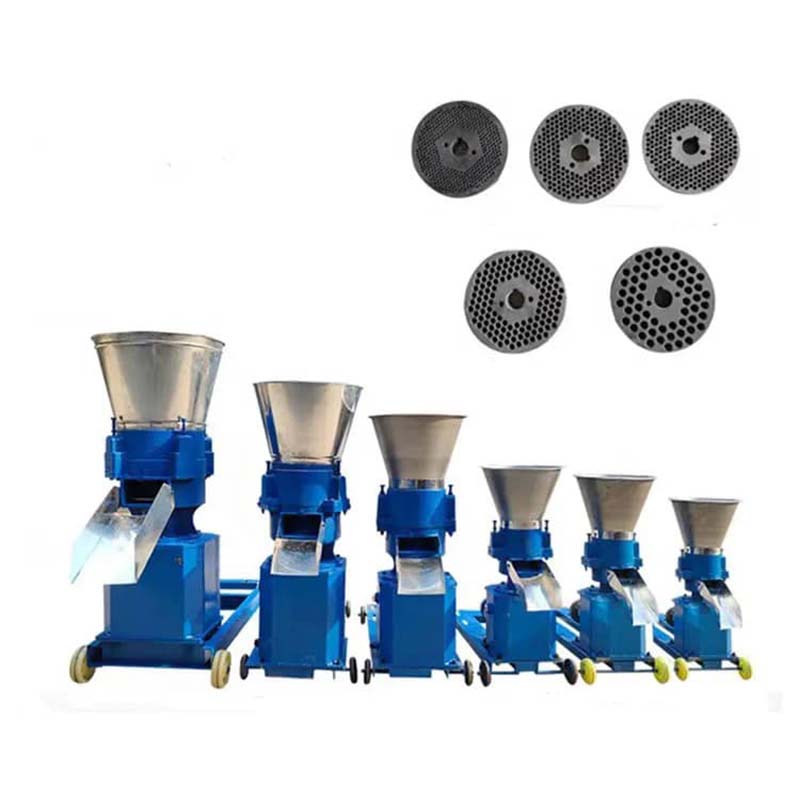
Conclusion
The modern feed pellet machine represents a pinnacle of engineering excellence, crucial for sustainable and efficient animal feed production. Our commitment to advanced manufacturing techniques, stringent quality control, and customer-centric solutions ensures that our machines deliver exceptional performance, reliability, and economic value. By choosing our technology, feed producers gain a strategic partner dedicated to maximizing their operational efficiency and product quality in an increasingly demanding global market.
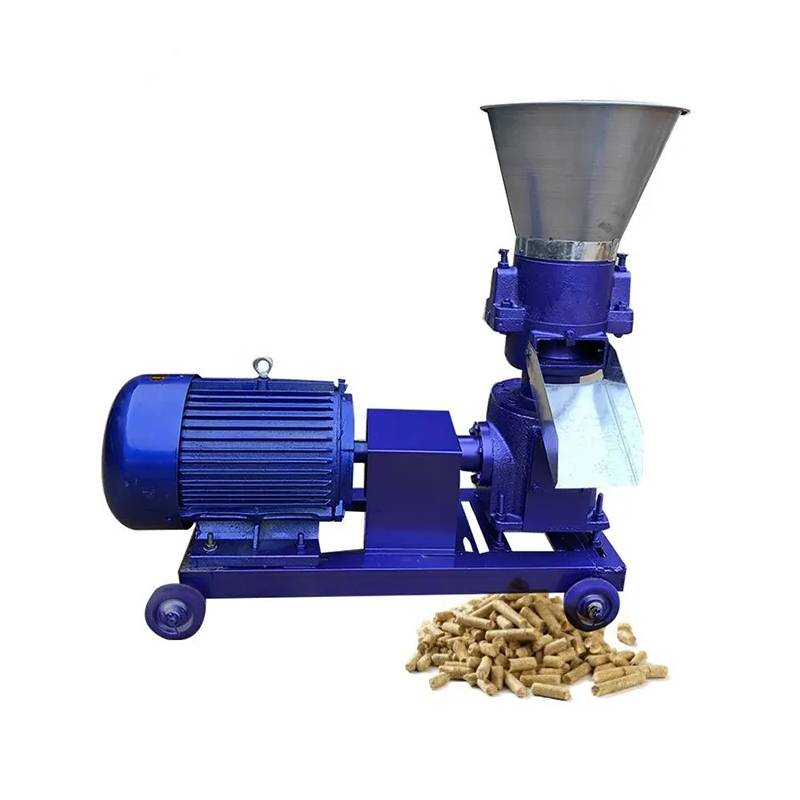
References
- Feed Manufacturing Technology II. (2018). American Feed Industry Association.
- Thomas, M. (2009). The effect of feed processing on nutrient digestibility in poultry. World's Poultry Science Journal, 65(3), 473-488.
- Swarbrick, J. (2007). Encyclopedia of Pharmaceutical Technology. CRC Press.
- FAO. (2020). The State of World Fisheries and Aquaculture 2020. Food and Agriculture Organization of the United Nations.
- Van der Poel, A. F. B. (2002). Effects of physical and chemical treatments on the nutritional quality of feedstuffs. Nutrition Research Reviews, 15(1), 187-200.
-
Evisceration Table - Hygienic, Stainless Steel, Easy-Clean
NewsNov.17,2025
-
Chicken Plucker and Scalder | Fast, Stainless, Adjustable
NewsNov.17,2025
-
Silo Solutions: Durable, Automated, Batching-Ready Storage
NewsNov.17,2025
-
Automatic Drinking Line for Poultry | Precise & Durable
NewsNov.17,2025
-
Cutting Machine for Meat & Bone | High-Precision, Safe
NewsNov.17,2025
-
Chicken Feet Peeling Machine | Fast, Hygienic, High-Yield
NewsNov.10,2025






